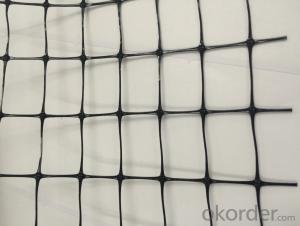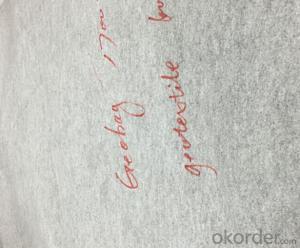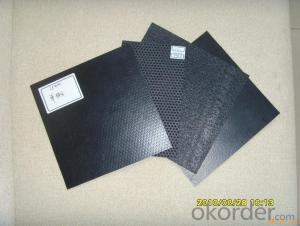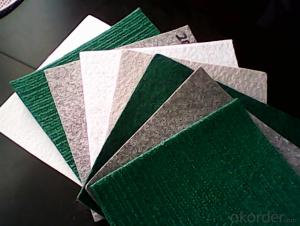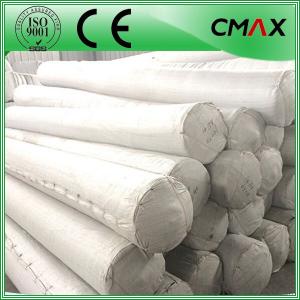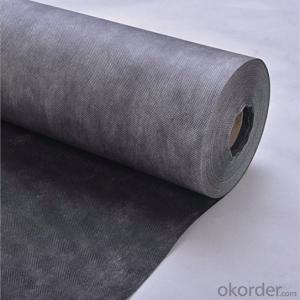PP/PE Plastic Deer Fence Netting /Poultry Netting
- Loading Port:
- China main port
- Payment Terms:
- TT OR LC
- Min Order Qty:
- 5000 m²
- Supply Capability:
- 1000000 m²/month
OKorder Service Pledge
OKorder Financial Service
You Might Also Like
Plastic netting plastic mesh breeding mesh
1. Plastic Plain Netting
Colour:white,black,blue and green, client's requirement.
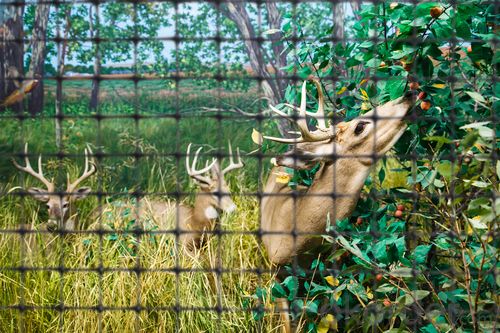
2. Deer fence introduction:
Deer fencing is a very high strength, lightweight, 3.6ft to 7.3ft high deer fence manufactured from high strength polypropylene BOP plastic netting. Deer have a tendency to forage over large areas and the cost effective deer fencing offers a very effective deer control barrier.
The deer fence is black, UV stabilised and rot proof and unobtrusive as it merges into it's background. Deer fencing is very quick and easy to erect and each roll weighs less than 15kg. The Deer Netting should be installed by battening to the fencing posts to ensure the mesh filaments are not damaged.
3. Features of the deer neeting fence:
Deer fence is easy to erect and install
Plastic netting has a mesh hole size of 0.06" ,0.08",0.18",0.19"
The BOP plastic netting has a high tensile strength
Plastic mesh is UV stabilized and chemical resistant
Deer fencing rolls are lightweight
Deer fencing is a very high strength, lightweight 1.8m high Deer fence manufactured from polypropylene.
Deer fencing net is supplied on a 100m long roll
4. Features:
1). Low cost, while has superior strength
2). Has anti-tearing and friction capability
3). Wide range of product availability, some other mesh sizes and weights can also produced as per customers' requirements.
5. Package/Payment/Delivery:
Package: Usually packed by rolls in plastic film bags with labels inside and then loosely loaded in the container
Payment: 30% in advance before manufacturing,and the balance upon the fax of B/L
Delivery: Within 40 to 60 days after receiving the deposit or L/C.
6. FAQ:
Q1: What is your minimum order quantity?
A:The minimum order quantity is 5000 ,but it is negotiable.
Q2:What is your payment terms?
A: T/T,Western Union,Paypal,L/C...
Q3:What is your delivery time?
A:Production time usually costs 2-20 days.
Waiting to cooperate with you!
- Q:Can geotextiles be used in shoreline revetment projects?
- Yes, geotextiles can be used in shoreline revetment projects. Geotextiles are commonly used to stabilize soil and prevent erosion in various civil engineering projects, including shoreline revetments. They can help reinforce the revetment structure, retain soil particles, and provide filtration, thereby enhancing the overall stability and effectiveness of the revetment system.
- Q:What are the types of geotextiles used in railway subgrade
- 300g, 400g range, I am specializing in the production of geotextile geomembrane and other materials, wish smooth
- Q:Can geotextiles be used in retaining wall drainage systems?
- Yes, geotextiles can be used in retaining wall drainage systems. Geotextiles are commonly used as a filter to prevent soil erosion while allowing water to pass through. In retaining wall drainage systems, geotextiles can be installed behind the wall to prevent the clogging of drainage pipes and promote efficient water flow, reducing hydrostatic pressure and preventing damage to the wall.
- Q:what do you mean nonwoven geotextiles ???
- please refer the folowing url to know all the details about non woven geo textiles
- Q:How do geotextiles help with soil confinement in erosion control bags?
- Geotextiles play a crucial role in soil confinement within erosion control bags by acting as a barrier that prevents the soil from escaping while allowing water to pass through. They provide structural stability to the bag, preventing it from collapsing or shifting, thereby maintaining the shape and effectiveness of the erosion control structure. Additionally, geotextiles help in distributing the load evenly across the bag, minimizing stress on the soil and enhancing its ability to resist erosion.
- Q:Are geotextiles resistant to chemicals?
- Yes, geotextiles are generally resistant to chemicals.
- Q:Can geotextiles be used in railway construction?
- Yes, geotextiles can be used in railway construction. They are commonly employed as a separation layer between subgrade soils and the ballast, helping to prevent the mixing of materials and providing stability. Geotextiles also aid in drainage, filtration, and erosion control, enhancing the overall performance and lifespan of railway tracks.
- Q:Can geotextiles be used for soil reinforcement in embankments?
- Yes, geotextiles can be used for soil reinforcement in embankments. Geotextiles are often used in civil engineering projects to enhance soil stability and prevent erosion. In embankments, they can be placed between soil layers to distribute loads, improve drainage, and increase the overall strength and stability of the structure.
- Q:What are the considerations for geotextile selection in landfill projects?
- When selecting geotextiles for landfill projects, several considerations must be taken into account. These include the desired function of the geotextile, such as separation, filtration, or drainage. The physical properties of the geotextile, such as tensile strength, puncture resistance, and thickness, are also important factors to consider. Additionally, the site conditions, such as soil type, water table, and potential for chemical exposure, should be evaluated to ensure the geotextile's compatibility. Lastly, the long-term durability and cost-effectiveness of the geotextile should be considered to ensure its suitability for the landfill project.
- Q:Are geotextiles commonly used in agriculture?
- Yes, geotextiles are commonly used in agriculture. They serve various purposes such as weed control, soil stabilization, erosion prevention, and drainage management. Geotextiles help improve crop yield, reduce maintenance costs, and promote sustainable farming practices.
1. Manufacturer Overview |
|
|---|---|
| Location | |
| Year Established | |
| Annual Output Value | |
| Main Markets | |
| Company Certifications | |
2. Manufacturer Certificates |
|
|---|---|
| a) Certification Name | |
| Range | |
| Reference | |
| Validity Period | |
3. Manufacturer Capability |
|
|---|---|
| a)Trade Capacity | |
| Nearest Port | |
| Export Percentage | |
| No.of Employees in Trade Department | |
| Language Spoken: | |
| b)Factory Information | |
| Factory Size: | |
| No. of Production Lines | |
| Contract Manufacturing | |
| Product Price Range | |
Send your message to us
PP/PE Plastic Deer Fence Netting /Poultry Netting
- Loading Port:
- China main port
- Payment Terms:
- TT OR LC
- Min Order Qty:
- 5000 m²
- Supply Capability:
- 1000000 m²/month
OKorder Service Pledge
OKorder Financial Service
Similar products
New products
Hot products
Hot Searches
Related keywords
